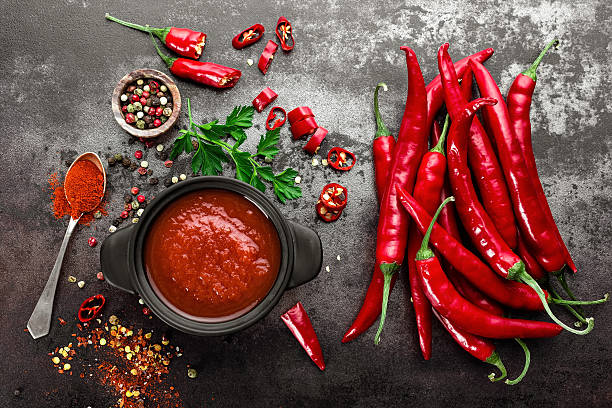Bringing the Heat: Chile Peppers and Their Global Influences
No matter where you are in the world, chances are you will find a dish that incorporates chile peppers. These fiery fruits have influenced cuisines globally, adding heat, flavor, and even health benefits to numerous dishes. In this article, we will journey across the globe, exploring the diverse uses and varieties of chile peppers and their impact on different culinary traditions.

A Fiery History: The Origins of Chile Peppers
Chile peppers originated in South America, where they have been cultivated for over 6000 years. The Spanish and Portuguese explorers were responsible for introducing them to the rest of the world during the 15th and 16th centuries, fundamentally changing the flavor profiles of many global cuisines.
Hot Stuff: The Scoville Scale and Heat Varieties
The heat of a chile pepper is measured using the Scoville Scale. While the mild bell pepper sits at zero Scovilles, the Carolina Reaper holds the current record with over 2 million Scoville units. The heat comes from capsaicin, a chemical compound that can offer health benefits like pain relief and boosted metabolism.
Global Influences: Chile Peppers Around the World
From the smoky chipotle peppers of Mexico to the fiery bird’s eye chiles of Thailand, chile peppers have found their way into many global cuisines. They can be used fresh, dried, powdered, or even smoked, each method offering a unique flavor profile.
Spice Up Your Life: Innovative Uses of Chile Peppers
Chile peppers are not just for savory dishes. They can also be found in sweet applications, like chocolate and ice cream, where they add a surprising kick. Moreover, mixologists are increasingly using them in cocktails for a spicy twist.
Some Like It Hot: Tips and Facts for Cooking with Chile Peppers
- Capsaicin, which causes the heat, is concentrated in the seeds and membranes. Remove these for a milder flavor.
- Dairy products can help neutralize the heat if a dish becomes too spicy.
- Always wash your hands after handling chile peppers to avoid irritating your skin or eyes.
In conclusion, chile peppers have left their mark on global cuisines, offering countless flavors, heat levels, and health benefits. Whether you crave the intense burn of a habanero or the mild tang of a poblano, there’s a chile pepper out there for everyone. So why not try incorporating some into your cooking and experience the world of flavors they can offer?




